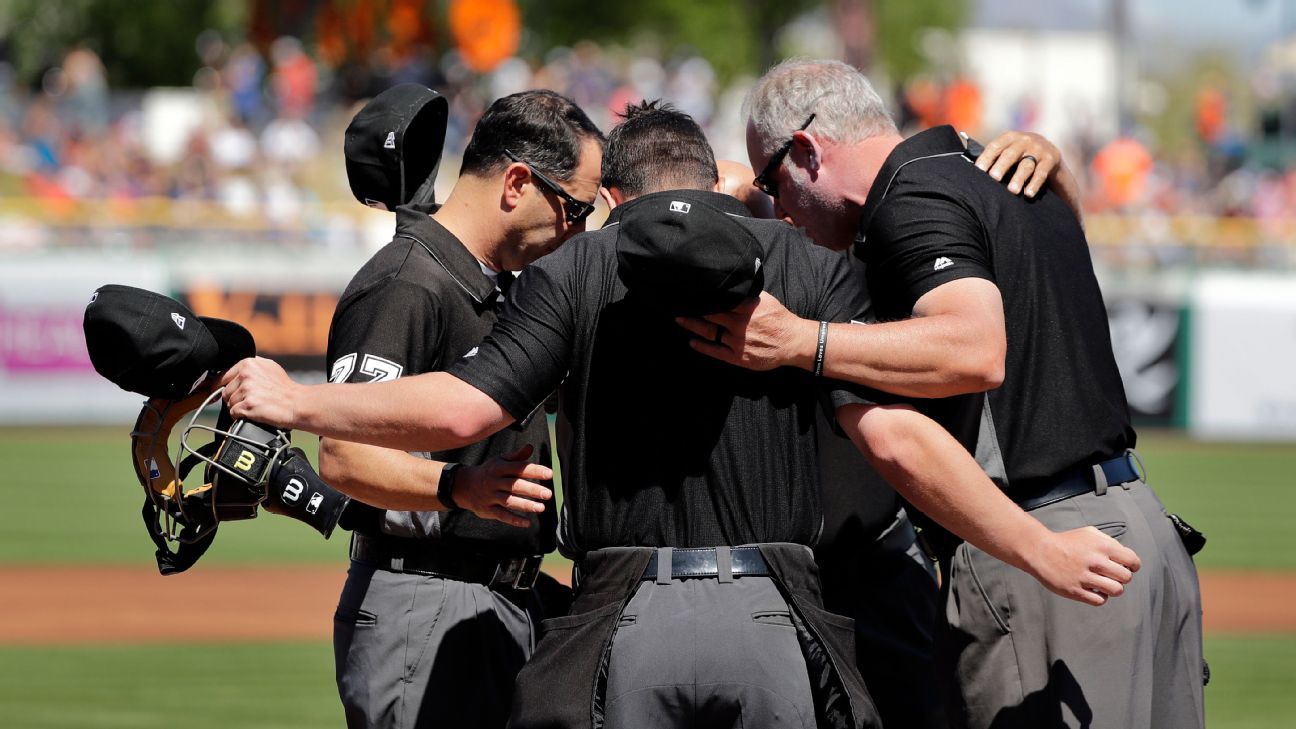A new study reports that younger umpires are better at calling balls and strikes than older umpires and that umpires selected for recent World Series games have not necessarily been the best performers.
Boston University finance professor Mark Williams and a team of BU graduate students studied the results of nearly four million pitches from the past 11 seasons of Major League Baseball and demonstrated the following:
-
In 2018, umpires made 34,294 incorrect ball and strike calls, an average of 14 per game or 1.6 per inning.
-
Umpires showed a persistent two-strike bias. With two strikes, umpires were twice as likely to call a true ball a strike (29 percent of the time) than with a lower count (15 percent). The error rates have declined since 2008, when it was 35.2 percent, but over the 11 seasons nearly one-third of the batters who struck out looking were called out on miscalls.
-
Strike-zone blind spots exist. In 2018, calls in the top left of the zone were miscalled 26.8 percent of the time and calls in the top right of the zone were missed 27.0 percent of the time. Meanwhile, calls in the bottom left were missed 14.3 percent of the time and calls in the bottom right of the zone were missed 18.3 percent of the time.
-
In 2018, the top 10 umpires averaged 37.8 years of age and 6.3 years of experience. The bottom 10 averaged 56.6 years of age and 23.1 years of experience.
-
For the 2018 World Series, none of the top 10 umpires with the best ball/strike rates were selected while five of the seven umpires selected had a ball call rate higher than the league average. Ted Barrett, the 20-year veteran who was the crew chief, ranked as the worst umpire in 2018 with a bad call rate of 11.5 percent. Joe West, who began his umpiring career in 1978, was selected for his sixth World Series. He had the second-worst bad call rate in 2018.
-
The top umpires in 2018 were Mark Wegner, John Libka and Will Little.
For the study, the research team studied game data from 2008 to 2018 available at MLB.com, Baseball Savant and Retrosheet. Called pitches and strike zone overlay were populated from Statcast, Pitch F/X and Baseball Savant data. The researchers used visual technology to compare the strike zone to the actual calls, separating the correct calls from the incorrect calls.
The study did report that the bad call percentage has improved. In 2008, the bad call rate was 16.4 percent. In 2018, it was down to 9.2 percent and the missed call rate has improved each season.
Interestingly, walks have dramatically increased in the majors so far this season, to an average of 3.66 per game, compared to 3.23 in 2018. That would be the largest season-to-season change in walk rate since 2000-01, when it fell from 3.75 to 3.25, and the biggest increase since 1968-69, when it climbed from 2.82 to 3.45. That offseason, after pitchers dominated in 1968, the mound was lowered and the definition of the strike zone changed to make it smaller. No such changes were made for 2019.
According to ESPN Stats & Information data, in 2018 31.7 percent of takes were called strikes. This season, 31.2 percent of takes have been called strikes. With two strikes, in 2018, 11.5 percent of takes were called strikes, while that number is 11.1 percent in 2019. In both seasons, ESPN data says 12.2 percent of those pitches were in the strike zone, so umpires have perhaps been calling fewer third strikes so far, leading to the increased walk rate.
